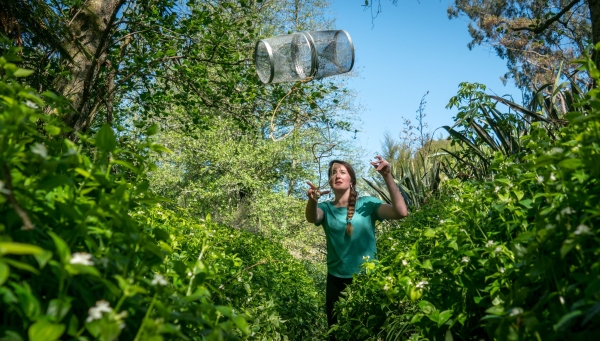The ear bones of tiny eels might hold clues to their largely secret life.
NIWA freshwater ecologist Dr Eimear Egan hopes that a three-year research project will help reveal the secret life of eels, where they go and why.
The project might also reveal their migratory habits from New Zealand rivers across vast areas of the ocean, and the effects of climate change in the ocean.
Egan, whose fascination with eels began as a child when bitten by one, has assembled a specialist team for the three-year Smart Ideas funded research project.
When Egan was growing up on an Irish farm, one of her chores was to regularly clean out the well from where her family drew its drinking water.In the well lived a large eel, and no matter how many times it was shifted, it just kept coming back.
New Zealand’s longfin and shortfin eels migrate down rivers to breed thousands of kilometres away in the western Pacific Ocean. Egan’s team will be studying the ear bones (otoliths) of juvenile or ‘glass’ eels to locate the spawning grounds and the oceanic routes they take on the return trip to freshwater habitat.
Dr Egan said the ear bones of eels tell stories about their daily lives and surroundings.
"The eel ear bones are formed at birth so when the eels migrate from rivers to the ocean at 20 to 30 years of age to spawn , a tiny structure made of calcium carbonate develops in the ears of the larval eels. The larvae grow into glass eels during their migration back to the New Zealand coast.
"A layer is deposited every day in this structure so we have a chronology or a diary of their daily life in the ocean," says Egan.
"Longfin eels are only found in New Zealand and according to our threat rankings, they have been assessed as 'at risk and declining'.
"At the moment, we don't really have a good understanding of their early life history, including their spawning grounds and larval migration routes, but this information is important because climate change is having a large effect on the western Pacific Ocean."
Dr Egan said it was not known if the numbers of glass eels surviving their migration to New Zealand were affected by oceanic conditions.
The team will use multiple techniques in their study, including polishing the ear bones by hand until the daily rings became visible.
"Then we can interpret distinct rings - or check marks - that coincide with when the larvae first feed and when they change from larvae into glass eels.
"We can measure the distance between rings to figure out daily growth rates, we can count the rings to estimate age and the date the larvae hatched."

